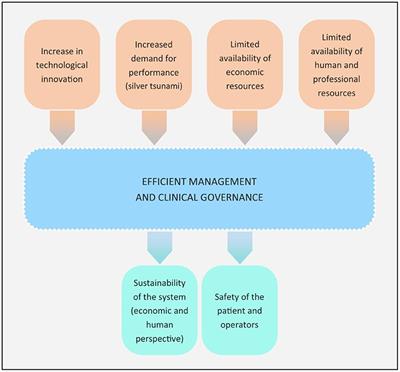|
Αρχειοθήκη ιστολογίου
-
►
2023
(391)
- ► Φεβρουαρίου (200)
- ► Ιανουαρίου (191)
-
▼
2022
(2843)
- ► Δεκεμβρίου (161)
- ► Σεπτεμβρίου (219)
-
▼
Απριλίου
(262)
-
▼
Απρ 07
(22)
- Guiding Principles for Surgical Pathways: A Tool f...
- Effect of acute aerobic exercise before immunother...
- Patient-reported experiences and views on the Cyto...
- Vaccination coverage among COVID-19 prevention
- Identifying the psychosocial predictors of ultravi...
- Quantitative effect of sex on disease activity and...
- Association of Serum Phosphate with Efficacy of St...
- Management of Respiratory Failure: Ventilator Mana...
- Chronic Kidney Disease from Polyvinylpyrrolidone D...
- Trajectories of Uremic Symptom Severity and Kidney...
- Patient-Reported Symptoms and Subsequent Risk of M...
- Could Phosphate Provide a Second Chance for Statin...
- Enterococcus faecalis alters endo-lysosomal traffi...
- Gait Phase Subdivision and Leg Stiffness Estimatio...
- Study on the Effects of Different Seat and Leg Sup...
- Optimizing Prehospital Stroke Systems of Care-Reac...
- Outcomes of Cervical Disc Replacement in Patients ...
- Effects of Low Protein-High Carbohydrate Diet duri...
- miR-199a-5p Plays a Pivotal Role on Wound Healing ...
- Glycyrrhizin Attenuates Hypoxic-Ischemic Brain Dam...
- Integrated Network Pharmacology and Gut Microbiota...
- Optimized Protocol for the Isolation of Extracellu...
-
▼
Απρ 07
(22)
- ► Φεβρουαρίου (264)
- ► Ιανουαρίου (280)
-
►
2021
(5625)
- ► Δεκεμβρίου (231)
- ► Σεπτεμβρίου (345)
- ► Φεβρουαρίου (620)
-
►
2020
(2065)
- ► Δεκεμβρίου (535)
- ► Σεπτεμβρίου (222)
- ► Φεβρουαρίου (28)
-
►
2019
(9608)
- ► Δεκεμβρίου (19)
- ► Σεπτεμβρίου (54)
- ► Φεβρουαρίου (3791)
- ► Ιανουαρίου (3737)
-
►
2018
(69720)
- ► Δεκεμβρίου (3507)
- ► Σεπτεμβρίου (3851)
- ► Φεβρουαρίου (8116)
- ► Ιανουαρίου (7758)
-
►
2017
(111579)
- ► Δεκεμβρίου (7718)
- ► Σεπτεμβρίου (7549)
- ► Φεβρουαρίου (10753)
- ► Ιανουαρίου (10529)
-
►
2016
(16402)
- ► Δεκεμβρίου (7478)
- ► Φεβρουαρίου (900)
- ► Ιανουαρίου (1250)
! # Ola via Alexandros G.Sfakianakis on Inoreader
Η λίστα ιστολογίων μου
Πέμπτη 7 Απριλίου 2022
Guiding Principles for Surgical Pathways: A Tool for Improving Outcomes and Patient Safety
Effect of acute aerobic exercise before immunotherapy and chemotherapy infusion in patients with metastatic non-small-cell lung cancer: protocol for the ERICA feasibility trial
|
Patient-reported experiences and views on the Cytosponge test: a mixed-methods analysis from the BEST3 trial
|
Vaccination coverage among COVID-19 prevention
|
Identifying the psychosocial predictors of ultraviolet exposure to the face in patients with xeroderma pigmentosum: a study of the behavioural factors affecting clinical outcomes in this genetic disease
|
Quantitative effect of sex on disease activity and disability accumulation in multiple sclerosis
|
Association of Serum Phosphate with Efficacy of Statin Therapy in Hemodialysis Patients
|
Management of Respiratory Failure: Ventilator Management 101 and Noninvasive Ventilation
|
Chronic Kidney Disease from Polyvinylpyrrolidone Deposition in Persons with Intravenous Drug Use
|
Trajectories of Uremic Symptom Severity and Kidney Function in Patients with Chronic Kidney Disease
|
Patient-Reported Symptoms and Subsequent Risk of Myocardial Infarction in Chronic Kidney Disease
|
Αρχειοθήκη ιστολογίου
-
►
2023
(391)
- ► Φεβρουαρίου (200)
- ► Ιανουαρίου (191)
-
▼
2022
(2843)
- ► Δεκεμβρίου (161)
- ► Σεπτεμβρίου (219)
-
▼
Απριλίου
(262)
-
▼
Απρ 07
(22)
- Guiding Principles for Surgical Pathways: A Tool f...
- Effect of acute aerobic exercise before immunother...
- Patient-reported experiences and views on the Cyto...
- Vaccination coverage among COVID-19 prevention
- Identifying the psychosocial predictors of ultravi...
- Quantitative effect of sex on disease activity and...
- Association of Serum Phosphate with Efficacy of St...
- Management of Respiratory Failure: Ventilator Mana...
- Chronic Kidney Disease from Polyvinylpyrrolidone D...
- Trajectories of Uremic Symptom Severity and Kidney...
- Patient-Reported Symptoms and Subsequent Risk of M...
- Could Phosphate Provide a Second Chance for Statin...
- Enterococcus faecalis alters endo-lysosomal traffi...
- Gait Phase Subdivision and Leg Stiffness Estimatio...
- Study on the Effects of Different Seat and Leg Sup...
- Optimizing Prehospital Stroke Systems of Care-Reac...
- Outcomes of Cervical Disc Replacement in Patients ...
- Effects of Low Protein-High Carbohydrate Diet duri...
- miR-199a-5p Plays a Pivotal Role on Wound Healing ...
- Glycyrrhizin Attenuates Hypoxic-Ischemic Brain Dam...
- Integrated Network Pharmacology and Gut Microbiota...
- Optimized Protocol for the Isolation of Extracellu...
-
▼
Απρ 07
(22)
- ► Φεβρουαρίου (264)
- ► Ιανουαρίου (280)
-
►
2021
(5625)
- ► Δεκεμβρίου (231)
- ► Σεπτεμβρίου (345)
- ► Φεβρουαρίου (620)
-
►
2020
(2065)
- ► Δεκεμβρίου (535)
- ► Σεπτεμβρίου (222)
- ► Φεβρουαρίου (28)
-
►
2019
(9608)
- ► Δεκεμβρίου (19)
- ► Σεπτεμβρίου (54)
- ► Φεβρουαρίου (3791)
- ► Ιανουαρίου (3737)
-
►
2018
(69720)
- ► Δεκεμβρίου (3507)
- ► Σεπτεμβρίου (3851)
- ► Φεβρουαρίου (8116)
- ► Ιανουαρίου (7758)
-
►
2017
(111579)
- ► Δεκεμβρίου (7718)
- ► Σεπτεμβρίου (7549)
- ► Φεβρουαρίου (10753)
- ► Ιανουαρίου (10529)
-
►
2016
(16402)
- ► Δεκεμβρίου (7478)
- ► Φεβρουαρίου (900)
- ► Ιανουαρίου (1250)









